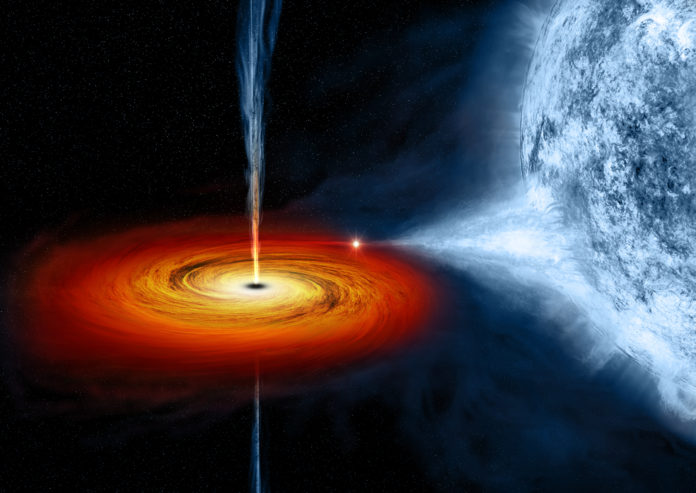
A black hole is anything but an expanse. When a large amount of territory or celestial body gets squeezed into a sphere approximately with an area comparatively smaller than it, it forms a black hole. A black hole possesses gravitational force that is so intense that nothing can escape it- light, air, nothing. According to scientists, star creation in the early cosmos may have succeeded in very extensive stars that would have generated black holes of up to 103 solar masses after collapsing because no light can escape them; people can’t perceive black holes. They are indistinguishable. Space telescopes with specialized instruments can help find black holes.
Einstein’s theory of general relativity (1915) prognosticated the black holes, which showed that it omits a scanty, dense remnant centre when an extensive star dies. Einstein’s theory of relativity states if the core’s mass is more than approximately three times the mass of the Sun, the force of gravity conquers all other different discovered forces of the Universe and creates a black hole.
The equation is as follows:
R = GE
Believed to be the final, dying stage of inert and nonreactive stars with no radiation, black holes gained more recognition in 1974 when Stephen Hawking made the fundamental discovery that black holes emit thermal radiation.
Professor of Physics at the University of Sussex, Xavier Calmet, stated the following, “Our finding that Schwarzschild black holes have a pressure, as well as a temperature, is even more exciting given that it was a total surprise. I am delighted that the research that we are undertaking at the University of Sussex into quantum gravity has furthered the scientific community’s more widespread understanding of the nature of black holes. If you consider black holes within only general relativity, one can show that they have a singularity in their centers where the laws of physics as we know them must breakdown“.
Astronomers can’t observe black holes with polemoscopes that detect x-rays, light, or other forms of electromagnetic radioactivity. Whenever a black hole crosses through an interstellar cloud matter, it will bring matter inward in a method known as accretion.
The edge of the black hole is called the event horizon through which any light or matter gets engulfed. Miniature black holes are designated as “stellar-mass” black holes, whereas the bigger ones are denominated as “supermassive“. It is estimated that 1 million suns together form the mass of one black hole. Our galaxy is the Milky way and possesses a supermassive black hole at its center called the Sagittarius A. According to the National Aeronautics and Space Administration (NASA), Earth will not fall into a black hole because the sidereal system is not near any black hole. Though black holes are formed from stars and the Sun is a star, the Sun can nevermore turn into a black hole. The Sun is not huge enough to turn into a black hole.
The world is still far behind in black holes, but we can learn something new about them every day with modernisation and technology.



